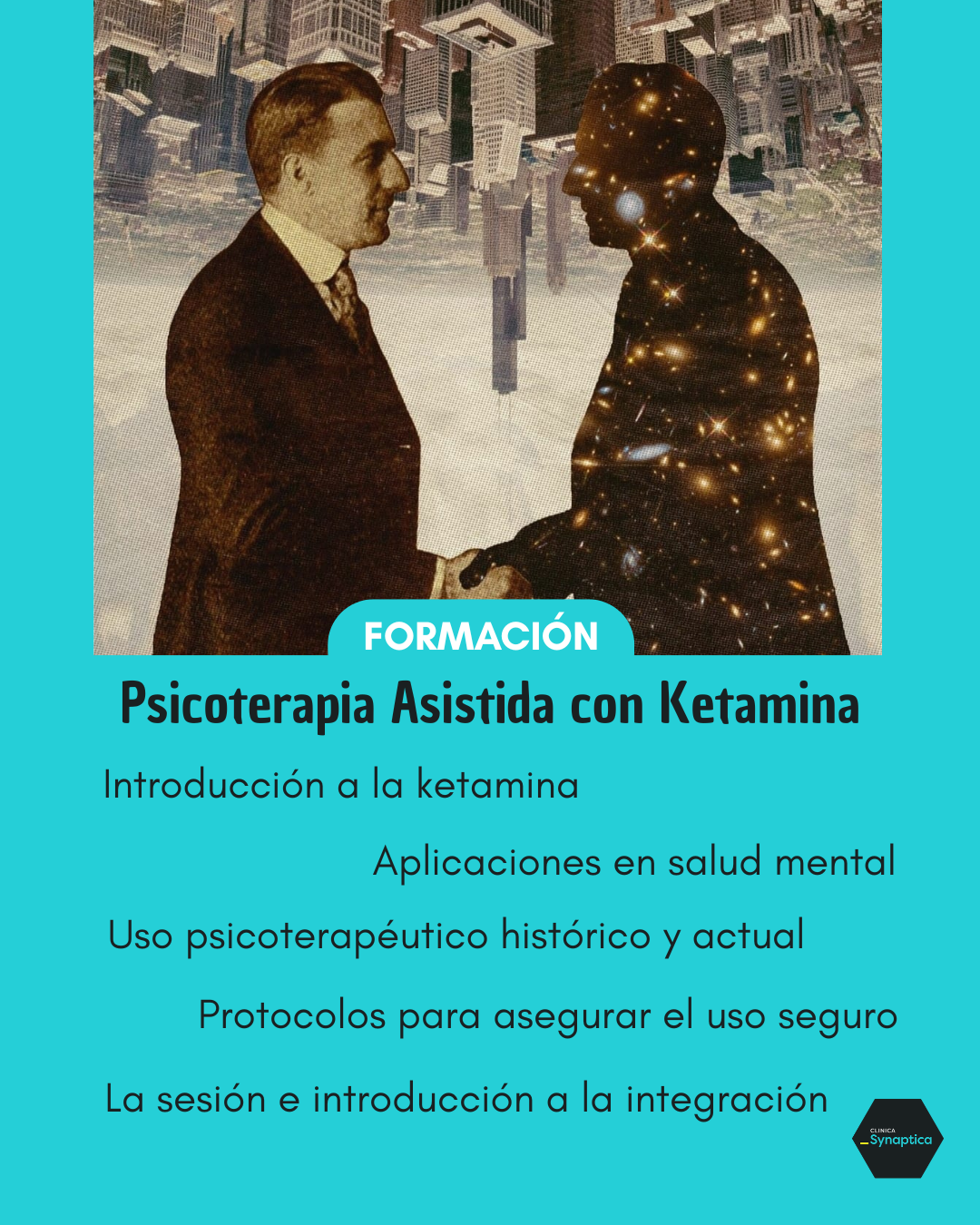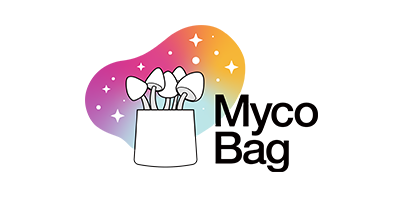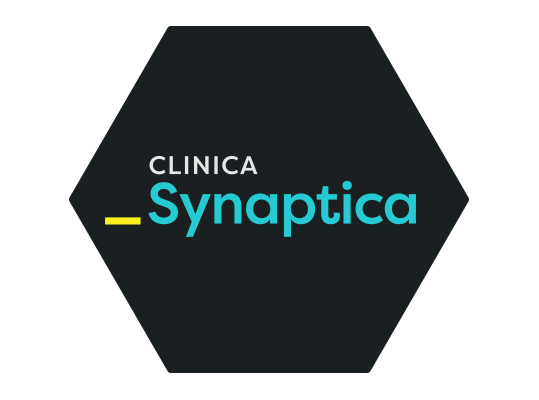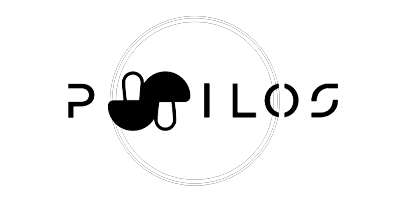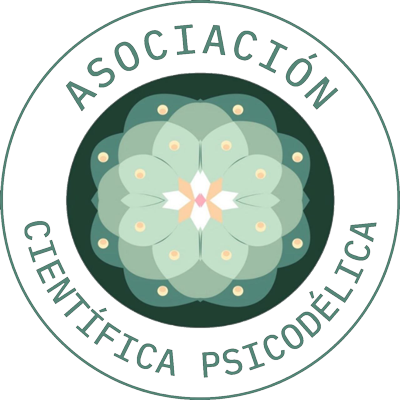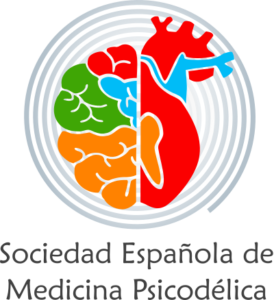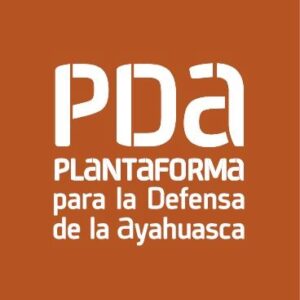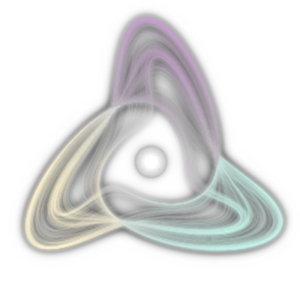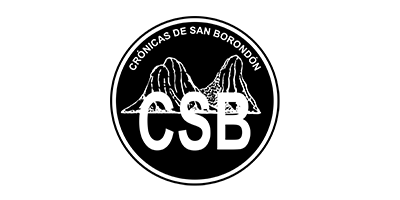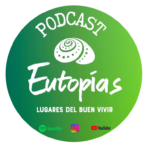Ketamine played a leading role in the last edition of Fuertedélica and will once again take center stage at Fuertedélica 25 — this time with Clínica Synaptica.
While some hail it as a psychedelic revolution in mental health, others warn about its compulsive use in recreational settings. Ketamine — an anesthetic, dissociative, psychedelic, and therapeutic catalyst — took center stage during one of the most intense panels at the recent edition of Fuertedélica, the international gathering on psychedelic culture and science.
The contributions of Estefanía Moreno, Eduardo Hidalgo, and Celia Morgan revealed not only the many faces of this molecule but also the fractures in how society approaches suffering, transformation, and pleasure. Amid the growing number of private clinics offering ketamine treatments — and with countries like Australia regulating its use in psychiatric therapy — the debate is no longer about whether ketamine works, but how, for whom, and in what context.
“Ketamine is an anesthetic, a substance that helps save lives… and also take them, as in lethal injections in death penalty cases. It’s a therapeutic drug and a party drug. It’s a drug you can have metacosmic sexual experiences with… and one you can lose everything to.”
So began psychologist and writer Eduardo Hidalgo — author of Ketamina, part of the Psiconáutica Collection — in one of the most controversial talks at Fuertedélica 2024.
The tone was set. In a roundtable that did not shy away from controversy, Eduardo, Celia Morgan (professor and researcher at the University of Exeter), and Estefanía Moreno (clinical psychologist at Synaptica) offered a kaleidoscopic view of this substance that, as Hidalgo pointed out, “went from sensory deprivation tanks to raves… and from there, to the therapist’s couch.”
Tabla de Contenido
ToggleFrom Operating Room to Club… and Therapy Room
Ketamine is an amphibious molecule: it moves seamlessly through clinical, festive, and spiritual contexts, just as easily as it dissolves the ego.
“It has a complex mechanism of action,” explained Estefanía Moreno, “but its primary effect is as a non-competitive NMDA receptor antagonist. It promotes neuroplasticity… and that opens a window for change.”
At her clinic, Estefanía said, they use a model combining psychotherapy and ketamine: “The patients who come to us are suffering deeply. They’ve often tried everything else and come to us when they feel they have nothing left.”
In this integrative approach, the relationship with the therapist, preparation for the experience, and post-session integration are key: “It’s essential to create a strong internal setting so that the experience can be meaningful and healing.”
Dr. Moreno championed the psychedelic experience as a driver for healing: “Expanded consciousness has healing power. It allows you to step outside habitual ego patterns, to access difficult memories from a different perspective. Sometimes symbols appear that reflect the evolution of the process — like a patient who went from seeing hidden underground temples to a radiant goddess emerging from a magnificent temple.”
This symbolic dimension, also emphasized by Morgan, is especially significant: “We did a qualitative study where themes of connection and transformation were the most common. The deep symbolic content is still underexplored… but it would be fascinating to delve into it.”
The Dark Side
Amid the hopeful narratives, Eduardo Hidalgo made sure to remind the audience of ketamine’s darker side:
“The users who ran into the most problems were functional adults, often with university degrees, seeking self-knowledge… and ended up destroyed.”
In the 1990s, he recalled, “the substance became democratized — it went from the psychedelic elite to the street. And many people got hooked without knowing what they were taking.”
His warnings carry weight, especially now as ketamine sees a resurgence worldwide. In October 2023, the U.S. FDA raised concerns about the increasing misuse of off-label ketamine, particularly in private clinics prescribing high doses without psychotherapeutic support.
“We’re facing a paradigm shift,” insisted Moreno. “We’re moving away from a psychiatry of pharmacological efficiency and into a psychiatry based on transformation.”
Morgan added, “When experiences are well-supported, they can become pivotal moments of connection and meaning.”
The therapeutic use of ketamine is far from being a cure-all. But when accompanied with respect, preparation, and proper follow-up, it can be — according to the panelists — a powerful tool. A door that opens, yes… but one that must be crossed with care.
Training in Ketamine-Assisted Therapy
During Fuertedélica Week 2025, Clínica Synaptica will offer a specialized course in ketamine therapy, diving into all aspects: from clinical application to ethical support, symbolic work, and the risks of misuse. It will be a unique opportunity for professionals in clinical, therapeutic, and social fields who wish to understand the true potential of this unclassifiable molecule.
If conversations like these resonate with you, if you want to hear from those changing how we understand consciousness, suffering, and healing, don’t miss the next edition of Fuertedélica. This year, we’ll once again gather key voices from the psychedelic, therapeutic, and artistic worlds to keep exploring, questioning, and learning together.
Reserve your ticket now.
– Introduction to Ketamine-Assisted Psychotherapy, Thursday, November 6, 4–9 PM. Corralejo.
